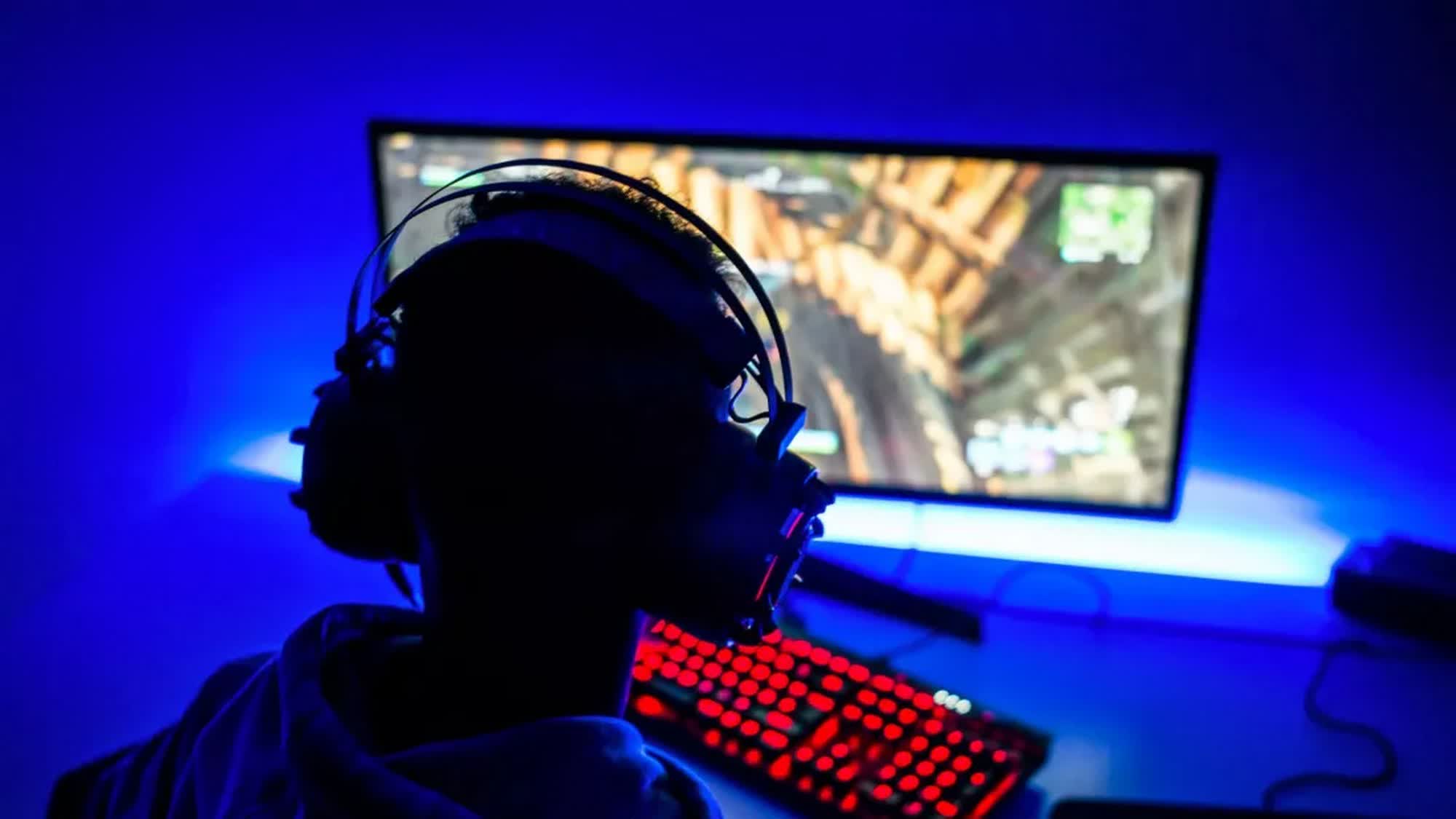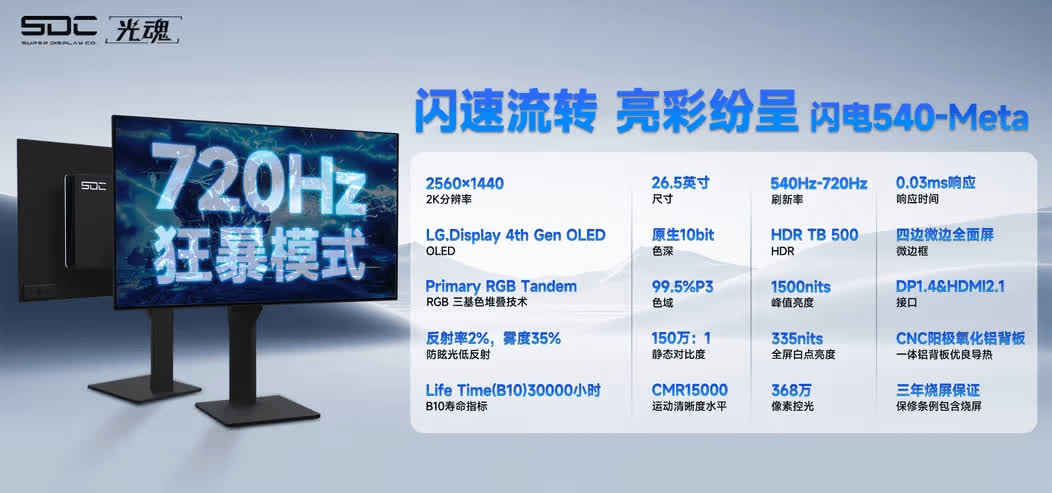The big picture: Samsung became the first company to launch a 500Hz OLED display last month, but Chinese manufacturer Super Display Company (SDC) claims to have already exceeded 700Hz. However, crucial details regarding the company's monitor remain unclear, including the resolution at which it achieves its maximum refresh rate.
Reddit user "HM204DTA" recently shared an advertisement for a WOLED monitor capable of reaching 720Hz. If the product exists, manufacturer SDC has taken the lead in the high-refresh-rate OLED arms race.
The flyer is currently the only evidence of the monitor's existence. The 1440p QHD panel defaults to 540Hz, already making it the fastest OLED monitor at that resolution. Samsung recently began shipping the 500Hz QHD OLED G6 in Southeast Asian countries, and ViewSonic is set to launch a similar display at an unspecified date.
Meanwhile, TN panels recently began reaching higher refresh rates at 1080p. Recently unveiled products from Acer and MSI can achieve 600Hz, while the Koorui G7, at 750Hz, is the fastest commercial monitor overall. While HM204DTA noted that SDC's monitor only reaches 720Hz at resolutions below 1440p (probably 1080p), it still represents a significant achievement for OLED technology.
Oddly, however, the 26.5-inch panel only supports DisplayPort 1.4 and HDMI 2.1, which might make reaching the maximum refresh rate difficult, likely requiring Display Stream Compression and precise tuning. Furthermore, while the HDR 500-rated monitor can reach a peak brightness of 1,500 nits, at full brightness it falls to 335 nits.
Other stats include a 99.5% P3 color gamut, a 1.5 million-to-1 contrast ratio, and a 0.03ms response time. Pricing remains unclear, but SDC offers a three-year burn-in warranty, and the monitor is rated for a lifetime of 30,000 hours.
Also read: The Best 1440p Gaming Monitors
Most users are likely content playing games and viewing content at 60 frames per second, and 120fps is becoming more common on consoles and TVs. However, pushing higher can dramatically improve motion clarity, especially when observing fast-moving objects. Refresh rates like 240Hz, 360Hz, and 540Hz can revive the motion clarity that older users might remember from CRTs during the 80s, 90s, and 2000s.
Still, achieving those framerates in modern games is another challenge. At several hundred frames per second, CPU limitations can become a bigger obstacle than GPU constraints, depending on the game. Users may also run into framerate caps. The release of the Nvidia RTX 4090 in 2022 prompted Blizzard to raise Overwatch 2's cap to 600fps, but now that might not be enough.

